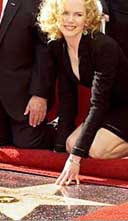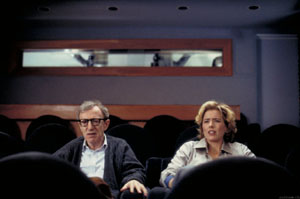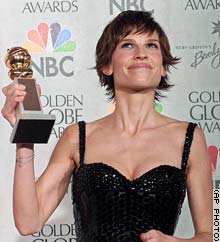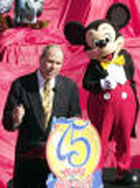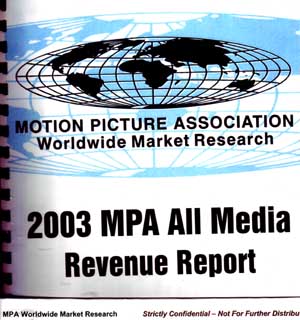
Under the intriguing headline "Video Sales Abroad Are Good News in Hollywood. Shhh," Ross Johnson reports in The New York Times today (January 31, 2005) that the Motion Picture Association (MPA), although it is privy to the studios income from worldwide DVD and VHS sales, will not give out that vital information. An MPA spokesman told Johnson, "Those figures are confidential, and we don't release them." So instead the Times had to rely on a British publication called Screen Digest for the guessestimate that the studios took in $11.4 billion from overseas home-video sales in 2004. Johnson rightly complains "It has always been hard to pry reliable numbers out of Hollywood, even when the numbers tell a happy story."
Ross Johnson is absolutely right about the importance of MPA numbers. They come directly from Fox, Time Warner, Sony, NBC-Universal, Paramount, and Disney, the 6 studios that dominate the new Hollywood . As part of their general principle of keeping their audience in the dark, the studios keep secret from the public-- and even the Wall Street analysts-- the data that accurately reflect the real sources of their earnings. Each of these studios, however, furnishes these precise data, including a detailed breakdown of their worldwide revenues from movie theaters, home video, network television, local television, pay television and pay-per-view– to the Motion Picture Asocciation on condition that they will not be released to any other parties. The MPA then consolidates these cash flows into the MPA All Media Revenue Report which it then circulates back to the studios on a confidential basis. Each studio can then use this common pool of data– the 2003 report is over 300 pages– to compare its own performance, and that of its subsidiaries, to that of the other major studios in 64 different markets. I had access to all these reports between 1999 and 2004 for my book The Big Picture: The New Logic of Money and Power in Hollywood. They helped answer a crucial question: how do the studios actually earn their money?
Now, there is no reason for the home-video market to remain a secret or even a press guessestimate. In 2003– the last full year that the MPA reported the studio data– the studios (and their subsidiaries) earned $18.9 billion from the world home video market. Of that $18.9 billion, $7.68 billioncame from overseas markets. Foreign DVD sales provided $5.52 billion, foreign VHS $2.16 billion. Ninety percent of those foreign earnings came from just 10 countries. (For a more complete breakdown, see Tables 2 and 3 in the Deal X-Raying section of my website).
Why shouldn't Hollywood-by-the numbers be public knowledge?


